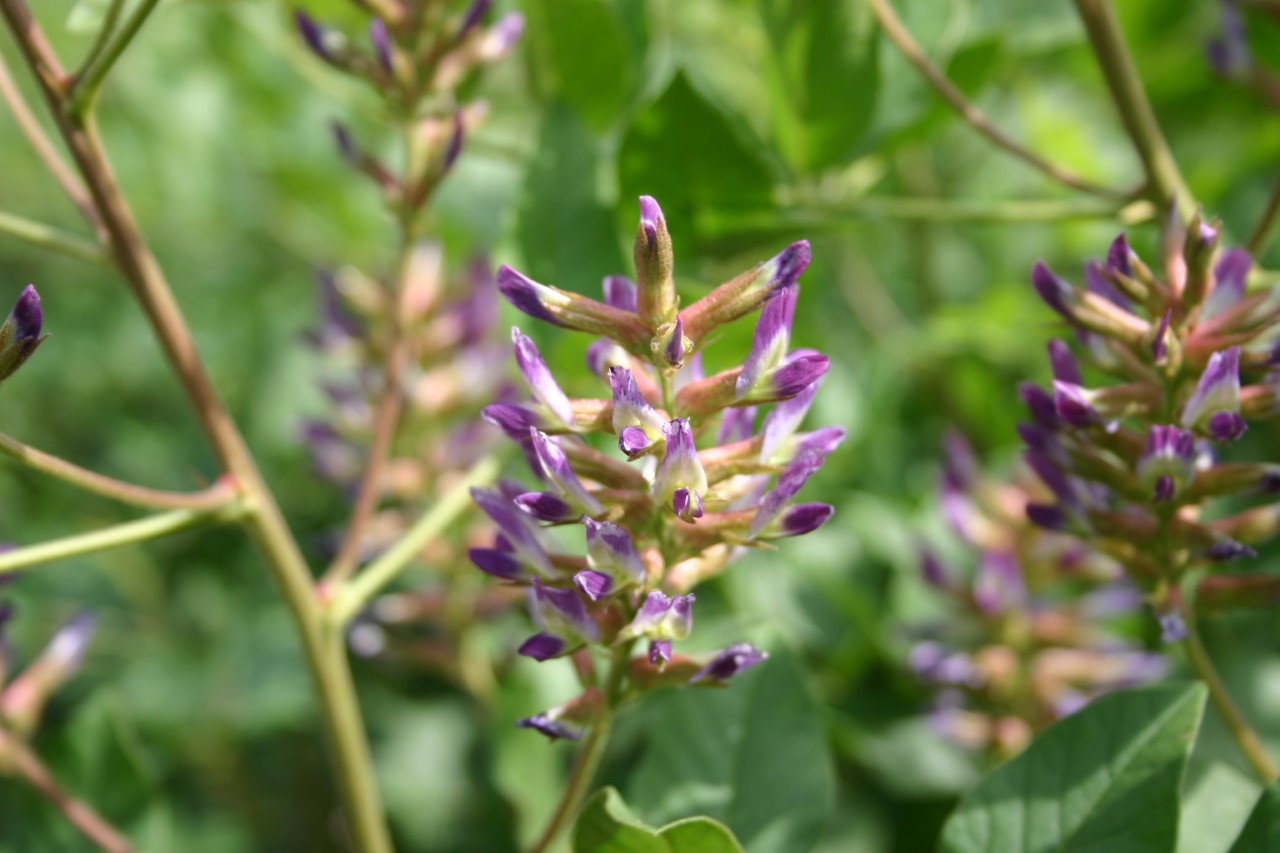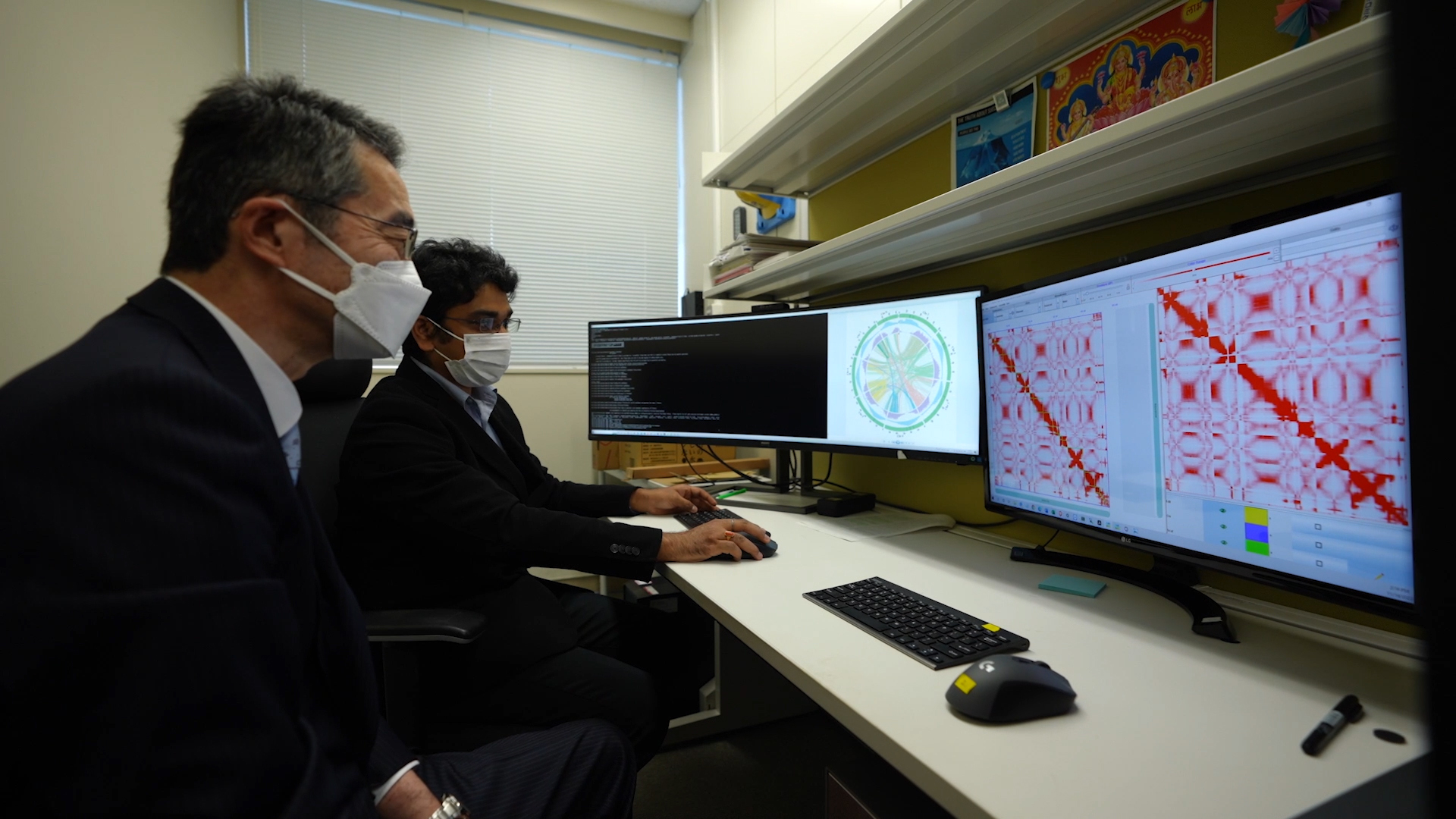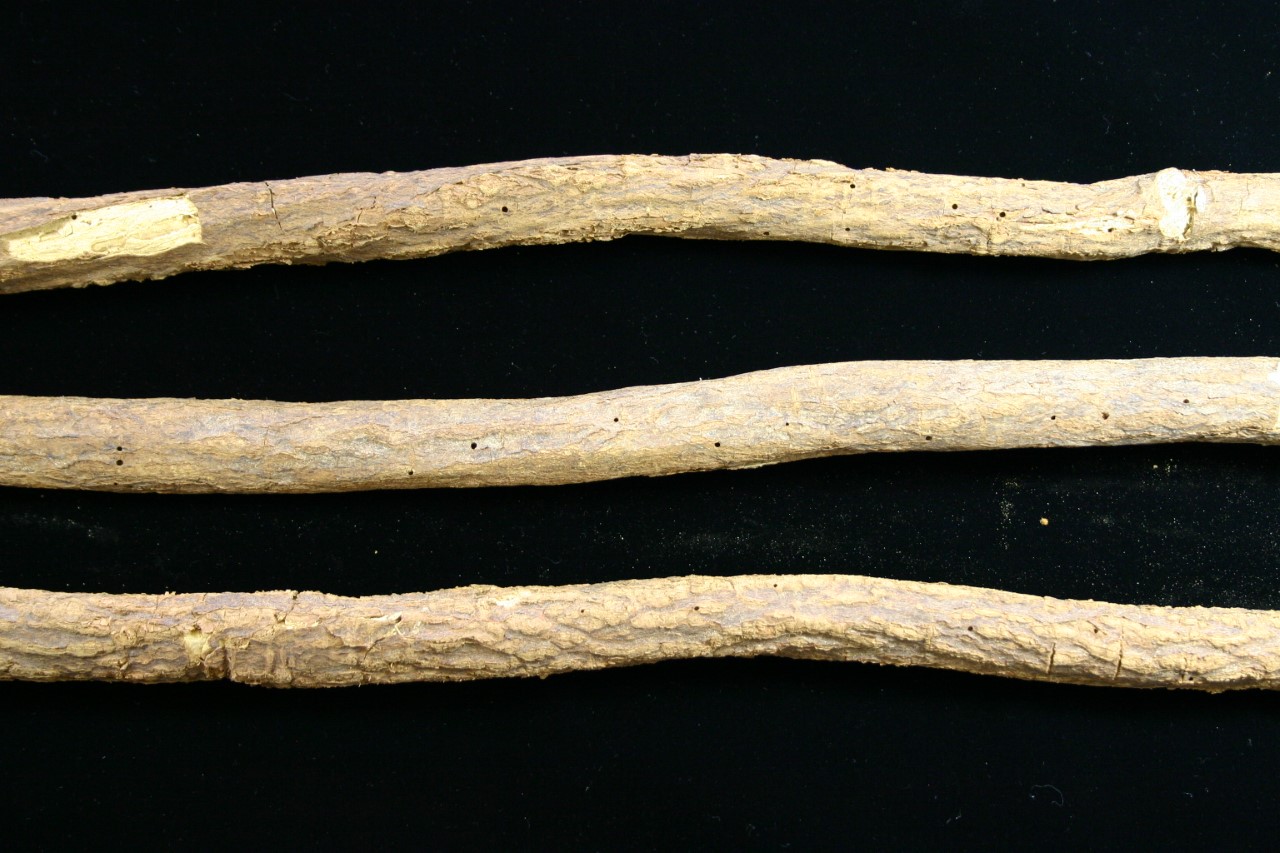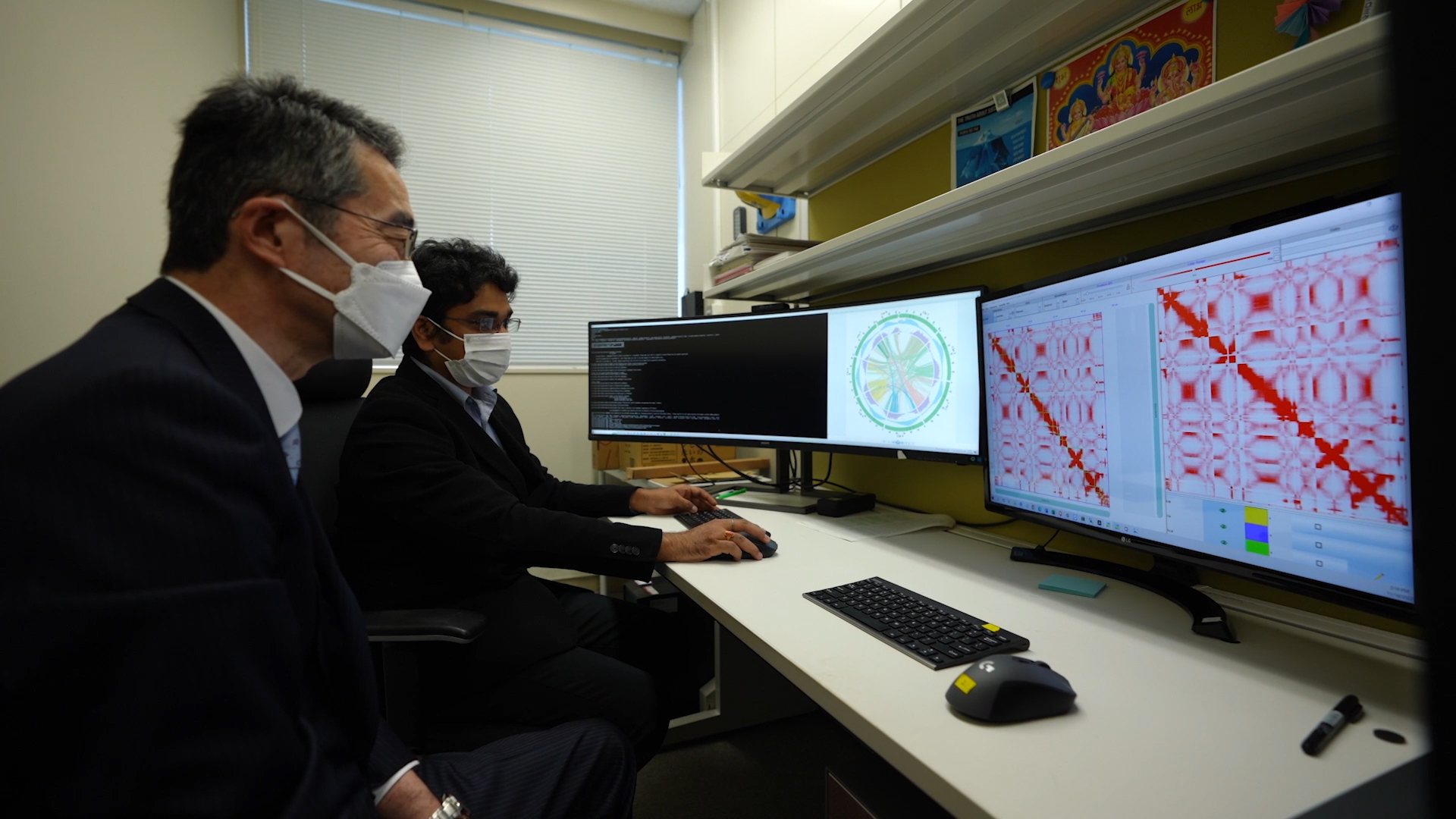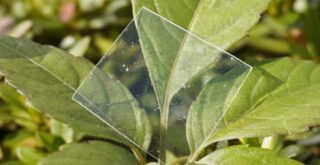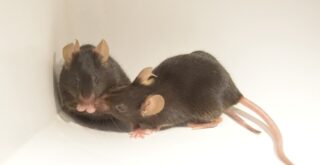Do you like licorice? My experience is that it’s one of those foods, like coriander or broccoli, that people tend to either love or hate. There are people, like me, who think it’s the best thing since sliced bread, and there are others who don’t understand why it’s even considered fit for human consumption.
But licorice is more than just a flavor. Actually, there are a number of varieties of the licorice plant, including the European species, Glycyrrhiza glabra, which is used for candy, and a Chinese variety, G. uralensis, which is primarily used in some types of traditional Sino-Japanese medicine (called kampo in Japanese). Why? The active ingredient of both varieties, glycyrrhizin, is believed to have a number of benefits, such as improving liver function and reducing inflammation, and for this reason it is included in the medicine.
What I’d like to talk about today, though, is some scientific news about Chinese licorice. In 2016, a team from RIKEN decoded its genome, and just recently took the work further by discovering on which chromosomes the gene clusters that control the production of glycyrrhizin are located. I recently spoke to RIKEN Center for Sustainable Resource Science (CSRS) researcher Amit Rai, the first author of the recently published paper. He told me a bit about the process of analyzing the genome, and it sounded pretty laborious. First it involved mashing up cells and separating the different compounds, not using centrifuges (because apparently this leads to messiness) but rather allowing the different layers to settle over a period of hours or days, and then repeating this until you get a fairly pure mixture of DNA and nothing but DNA.
Why is this research important? Well, today, Japan is facing a crisis of sorts with regards to Chinese licorice. As I mentioned, there is a big demand for it, as about 70 percent of prescriptions for kampo medicines include it. And although it used to be cultivated commercially in Japan, it isn’t anymore. So, Japan has to import it, mostly from China. But it’s not always easy to get. China is concerned about its only supply, and this has made it difficult for Japanese companies to get it. So what to do? The researchers at CSRS, including center director Kazuki Saito and Amit Rai, concluded that one way forward would be to make varieties of the plant that produced larger amounts of glycyrrhizin, which would make cultivation more profitable. Alternately, it might be even better if the genes responsible for synthesizing glycyrrhizin could be inserted into other plants or microbes, which would then allow it to be produced separately from licorice plants. And to do this, of course, you need to know which genes are responsible for its synthesis and understand how they work.
As I mentioned above, Chinese licorice was once cultivated commercially in Japan. Purely coincidentally, earlier this year I took a trip to Koshu, in Yamanashi Prefecture (which actually has mountains…), and along the way visited an old house that was previously used for both silk cultivation and, you probably guessed it, licorice production. There were some plants in the garden outside, but unfortunately the glycyrrhizin comes from the roots, so I wasn’t able to taste any. I guess for some people that would be a good thing…
But licorice is more than just a flavor. Actually, there are a number of varieties of the licorice plant, including the European species, Glycyrrhiza glabra, which is used for candy, and a Chinese variety, G. uralensis, which is primarily used in some types of traditional Sino-Japanese medicine (called kampo in Japanese). Why? The active ingredient of both varieties, glycyrrhizin, is believed to have a number of benefits, such as improving liver function and reducing inflammation, and for this reason it is included in the medicine.
What I’d like to talk about today, though, is some scientific news about Chinese licorice. In 2016, a team from RIKEN decoded its genome, and just recently took the work further by discovering on which chromosomes the gene clusters that control the production of glycyrrhizin are located.
I recently spoke to RIKEN Center for Sustainable Resource Science (CSRS) researcher Amit Rai, the first author of the recently published paper. He told me a bit about the process of analyzing the genome, and it sounded pretty laborious. First it involved mashing up cells and separating the different compounds, not using centrifuges (because apparently this leads to messiness) but rather allowing the different layers to settle over a period of hours or days, and then repeating this until you get a fairly pure mixture of DNA and nothing but DNA.
Why is this research important? Well, today, Japan is facing a crisis of sorts with regards to Chinese licorice. As I mentioned, there is a big demand for it, as about 70 percent of prescriptions for kampo medicines include it. And although it used to be cultivated commercially in Japan, it isn’t anymore. So, Japan has to import it, mostly from China. But it’s not always easy to get. China is concerned about its only supply, and this has made it difficult for Japanese companies to get it.
So what to do? The researchers at CSRS, including center director Kazuki Saito and Amit Rai, concluded that one way forward would be to make varieties of the plant that produced larger amounts of glycyrrhizin, which would make cultivation more profitable. Alternately, it might be even better if the genes responsible for synthesizing glycyrrhizin could be inserted into other plants or microbes, which would then allow it to be produced separately from licorice plants. And to do this, of course, you need to know which genes are responsible for its synthesis and understand how they work.
As I mentioned above, Chinese licorice was once cultivated commercially in Japan. Purely coincidentally, earlier this year I took a trip to Koshu, in Yamanashi Prefecture (which actually has mountains…), and along the way visited an old house that was previously used for both silk cultivation and, you probably guessed it, licorice production. There were some plants in the garden outside, but unfortunately the glycyrrhizin comes from the roots, so I wasn’t able to taste any. I guess for some people that would be a good thing…
Further reading
Rai et al. (2022) Chromosome-scale genome assembly of Glycyrrhiza uralensis revealed metabolic gene cluster centred specialized metabolites biosynthesis. DNA Research. doi:10.1093/dnares/dsac043
Further reading
Rai et al. (2022) Chromosome-scale genome assembly of Glycyrrhiza uralensis revealed metabolic gene cluster centred specialized metabolites biosynthesis. DNA Research. doi:10.1093/dnares/dsac043

